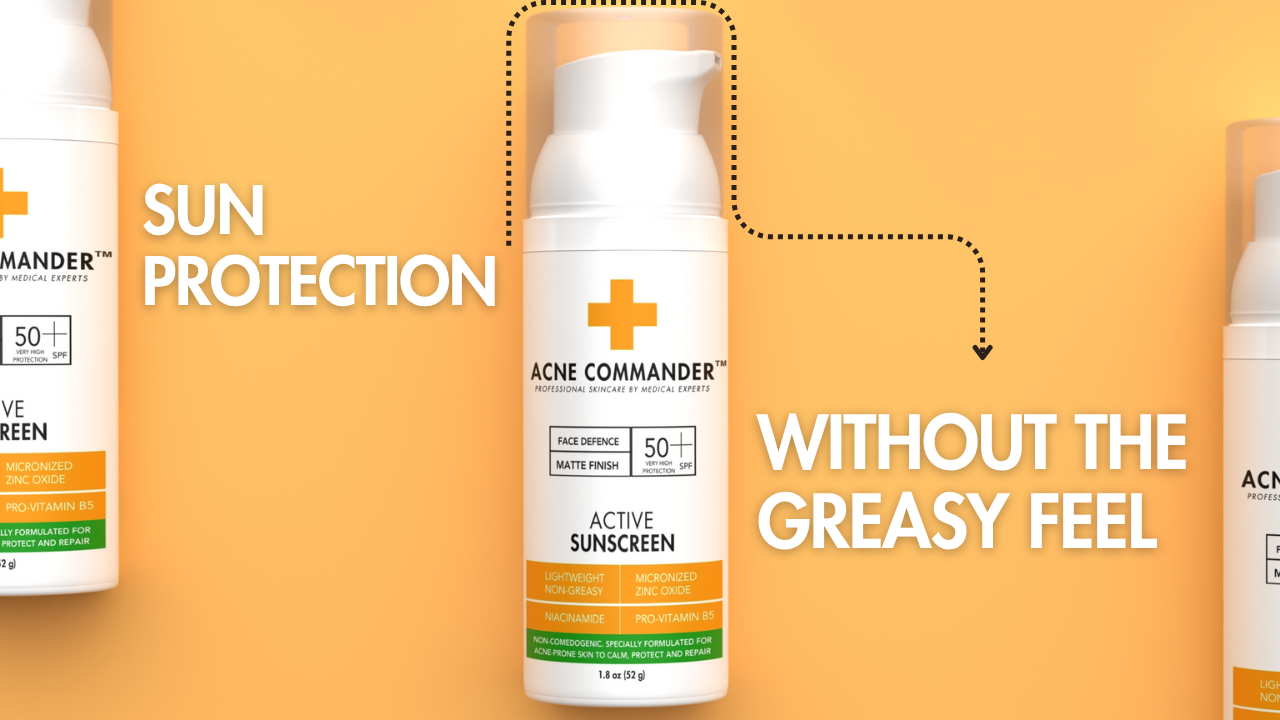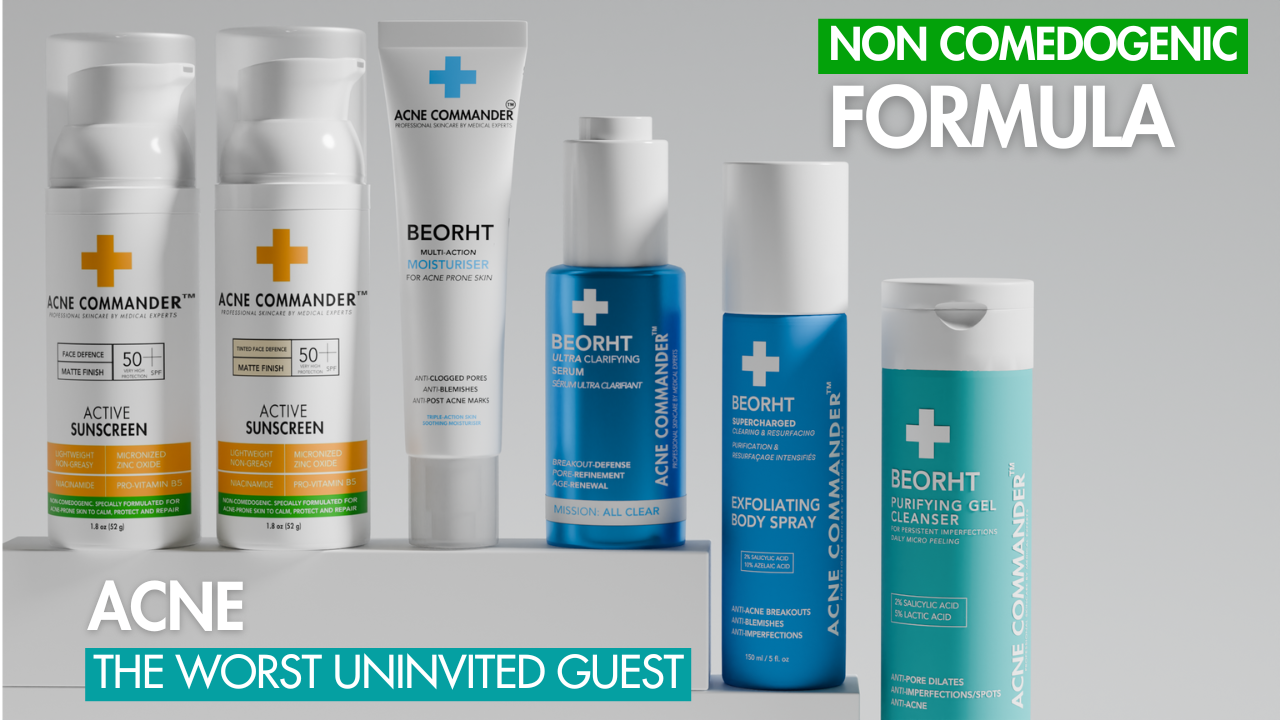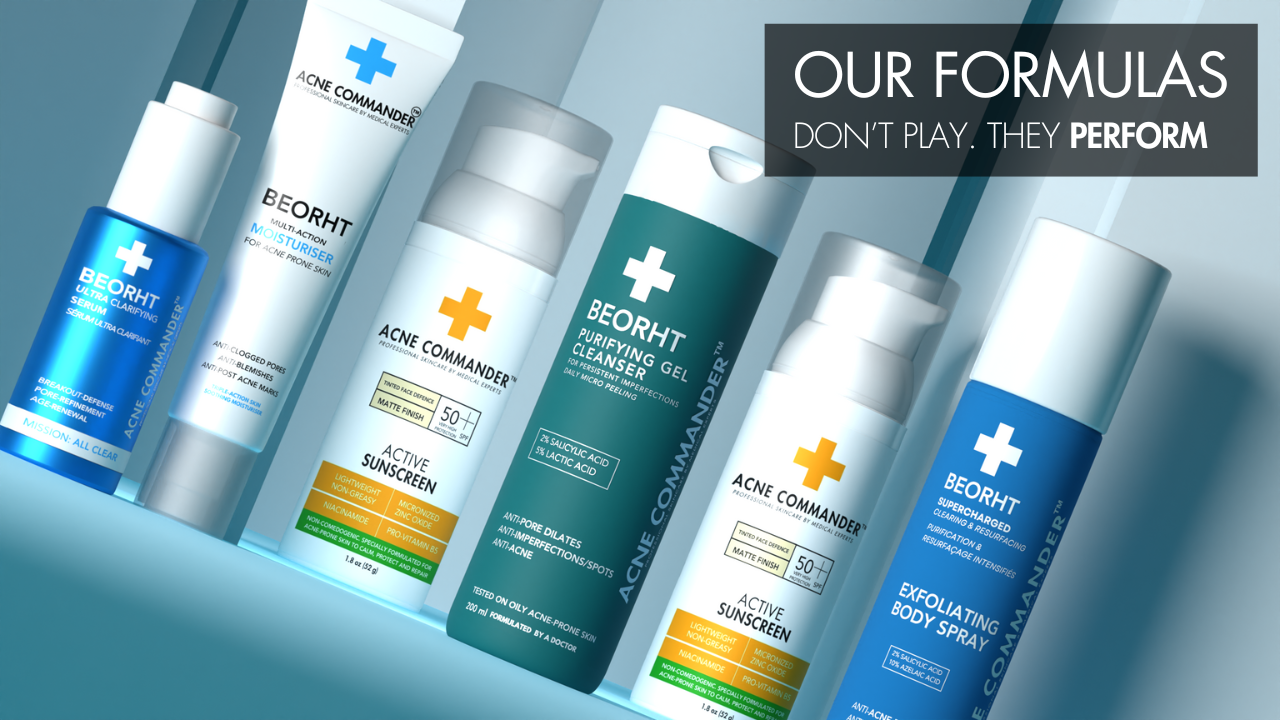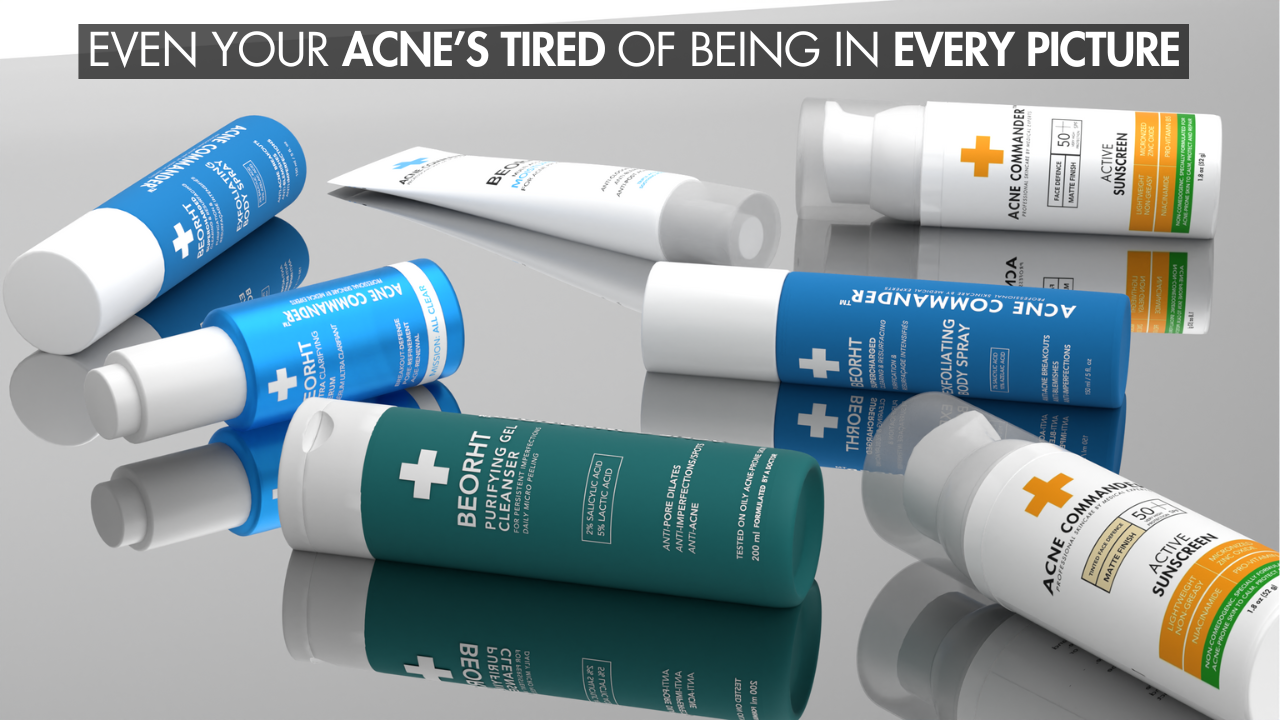Introduction: Skincare from Your Kitchen, Is Homemade Better?
If you’ve struggled with acne and felt let down by expensive store-bought products that either don’t work or make things worse, you’re not alone. Many people turn to homemade solutions with the hope of creating simpler, more natural, and skin-friendly alternatives, especially when it comes to moisturizers.
But while making your own skincare might seem easy and safe, acne-prone skin is one of the most reactive skin types, requiring precise formulations and non-comedogenic ingredients.
In this article, you’ll learn:
-
The science of moisturizing acne-prone skin
-
How to safely make a homemade moisturizer
-
Ingredients that hydrate and heal without clogging pores
-
What to avoid (even natural ingredients!)
-
Why advanced products like Acne Commander 3-in-1 Repairing Moisturiser often outperform DIY options
Let’s get into the reality of what goes into an effective homemade acne moisturizer.
Why Acne-Prone Skin Still Needs Moisture
Despite the myth that acne means your skin is “too oily,” most people with acne also suffer from dehydration and barrier damage. Over-washing, harsh treatments, or skipping moisturizer can make acne worse.
Benefits of Proper Moisturization:
-
Regulates oil production
-
Reduces inflammation
-
Prevents overcompensation of sebum
-
Calms redness and irritation
-
Improves healing and prevents scarring
The goal of a homemade moisturizer should be to hydrate without clogging, soothe without irritating, and support the skin’s ability to defend and heal itself.
The 3 Key Functions of an Acne-Friendly Moisturizer
Whether homemade or store-bought, all effective moisturizers must:
-
Hydrate (pull water into the skin with humectants)
-
Soften (smooth skin texture with emollients)
-
Seal (prevent water loss with occlusives, optional for oily skin)
Best Homemade Moisturizer Ingredients for Acne-Prone Skin
Here are safe, effective, and acne-friendly ingredients for homemade moisturizers:
✅ Humectants (Draw moisture into the skin)
|
Ingredient |
Benefit |
|
Glycerin |
Powerful hydrator, supports barrier |
|
Aloe Vera Gel |
Soothes irritation, adds light hydration |
|
Honey (Manuka or raw) |
Antibacterial, hydrates and calms skin |
✅ Emollients (Softens skin)
|
Ingredient |
Benefit |
|
Jojoba Oil |
Closest to natural sebum, non-comedogenic |
|
Rosehip Seed Oil |
Fades acne marks, high in Vitamin A |
|
Squalane (plant-derived) |
Lightweight, stable, and hydrating |
✅ Occlusives (Optional – seal in moisture)
|
Ingredient |
Use with care |
|
Beeswax or Candelilla Wax |
Light occlusive, avoid heavy use |
|
Refined Shea Butter |
Only for dry acne-prone skin in small amounts |
What to Avoid in Homemade Acne Moisturizers
|
Ingredient |
Why It’s Risky |
|
Coconut Oil |
Highly comedogenic (rating 4/5) |
|
Olive Oil |
Moderate comedogenicity |
|
Essential Oils (Tea Tree, Citrus, etc.) |
High irritation risk |
|
Unrefined Shea Butter or Cocoa Butter |
Heavy and pore-clogging |
|
Fragrance or Perfume |
Inflammatory to acne-prone skin |
|
Raw dairy, yogurt, or milk |
Bacterial risk and inconsistent pH |
How to Make Homemade Moisturizer for Acne – Step-by-Step
Tools You’ll Need:
-
Sterilized glass jar or dropper bottle
-
Mini whisk or spatula
-
Measuring spoons
-
Refrigerator (for storage)
🧴 Recipe 1: Aloe + Jojoba Hydrating Gel
Best For: Oily, inflamed, acne-prone skin
Ingredients:
-
2 tablespoons pure aloe vera gel
-
1 teaspoon jojoba oil
-
1/2 teaspoon glycerin
-
Optional: 1 drop niacinamide serum (if available)
Instructions:
-
Mix aloe, jojoba oil, and glycerin in a sanitized glass bowl.
-
Whisk until smooth and homogeneous.
-
Transfer to an airtight jar and store in the fridge for up to 7 days.
Benefits:
-
Lightweight and fast-absorbing
-
Soothes redness and calms breakouts
-
Hydrates without adding grease
🧴 Recipe 2: Honey + Rosehip Skin Repair Cream
Best For: Acne-prone skin with post-acne pigmentation
Ingredients:
-
1 teaspoon Manuka or raw honey
-
1 teaspoon rosehip seed oil
-
1 tsp aloe vera gel
-
1 vitamin E capsule (optional)
Instructions:
-
Mix all ingredients in a sterilized glass bowl.
-
Warm gently if the honey is thick.
-
Store in the fridge and use at night.
Benefits:
-
Fights bacteria and inflammation
-
Fades acne scars
-
Nourishes skin overnight
🧴 Recipe 3: Squalane + Calendula Lightweight Cream
Best For: Combination acne-prone skin
Ingredients:
-
1 tbsp squalane
-
1 tsp jojoba oil
-
1 tsp calendula extract (oil-based or hydrosol)
-
1/2 tsp glycerin
Instructions:
-
Blend all ingredients.
-
Store in a dark dropper bottle, keep cool.
-
Shake before use. Use within 10 days.
Benefits:
-
Lightweight hydration
-
Anti-inflammatory, skin-soothing
-
Non-comedogenic oil-based
Tips for Safe Homemade Skincare
-
Always patch test before full application
-
Use distilled or boiled water if making emulsions
-
Avoid cross-contamination – use clean spoons, spatulas
-
Store in air-tight, sterilized containers
-
Label with date and ingredients
-
Discard after 7–10 days
Why DIY Isn’t Enough for Moderate to Severe Acne
Homemade moisturizers are best for:
-
Early teen acne
-
Very mild breakouts
-
Sensitive skin reacting to conventional products
-
Minimalist routines
But they lack:
-
Consistent pH balance
-
Long-term stability
-
Active acne treatments (BHA, zinc PCA, ferments, etc.)
-
Clinical testing for comedogenicity
For more advanced skincare needs, it’s often better to transition to a clinically formulated product like Acne Commander 3-in-1 Repairing Moisturiser.
How Acne Commander Improves on the DIY Concept
Acne Commander combines the gentleness of natural hydrating ingredients with the clinical strength of proven acne actives.
|
Ingredient |
Function |
|
Glycerin + Mannose |
Deep hydration |
|
Niacinamide |
Reduces inflammation + oil |
|
Zinc PCA |
Controls sebum, antibacterial |
|
Salicylic Acid + Capryloyl SA |
Exfoliates inside pores |
|
2-Oleamido-1,3-Octadecanediol |
Barrier repair |
|
Vitreoscilla Ferment |
Microbiome balance |
|
Pomegranate Extract |
Antioxidant + redness relief |
Texture:
-
Gel-cream hybrid
-
Non-greasy, fast-absorbing
-
No fragrance, no pilling
-
Dermatologist-tested and non-comedogenic
When and How to Transition to Professional Formulas
If you’ve been making your own moisturizer but still struggling with:
-
Persistent breakouts
-
Excess oil or shine
-
Uneven skin texture
-
Redness and sensitivity
-
Acne scars or marks
Then it’s time to move to a solution like Acne Commander, which offers:
-
Targeted acne-fighting actives
-
Barrier-repair ingredients
-
Clinical effectiveness and safety
Start by:
-
Stopping DIY for 2–3 days
-
Patch testing Acne Commander
-
Introducing it slowly, once daily for 3 days, then twice daily
Expect visible improvements in 7–21 days.
FAQs: Homemade Moisturizers for Acne
❓ Can I use coconut oil in a homemade acne moisturizer?
No, it has a comedogenic rating of 4 and is likely to clog pores.
❓ Are homemade moisturizers safe?
Yes, if you use acne-safe ingredients, practice hygiene, and store them properly.
❓ How long do DIY moisturizers last?
Most last 5–10 days in the fridge, unless properly preserved.
❓ Can I use these under makeup?
Yes, but test the texture first. Oil-heavy moisturizers may not layer well.
❓ Can I mix DIY and store-bought products?
Yes, but avoid ingredient conflicts (e.g., layering strong acids with essential oils).
Conclusion: Homemade Works, But Only If Done Right
Making a homemade moisturizer for acne can be:
-
Empowering
-
Budget-friendly
-
Gentle on sensitive skin
But to be effective, it must be:
-
Non-comedogenic
-
Hydrating without being greasy
-
Made with clean tools and ingredients
-
Stored safely
For those with persistent, inflammatory, or cystic acne, a DIY solution may offer support, but not resolution. That’s where Acne Commander 3-in-1 Repairing Moisturiser shines.
It’s designed to hydrate, treat, soothe, and protect, all in one formula, backed by science, not just a Pinterest recipe.





